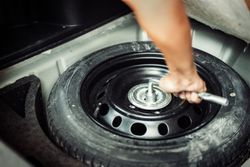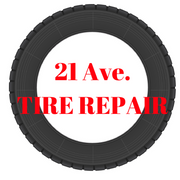
If you have a flat tire, you can use the spare that comes with your vehicle to drive to the nearest auto shop. Unfortunately, this extra tire isn't meant to permanently replace your damaged one. Driving on it for a prolonged period may cause damage to your wheel or suspension. Here’s a guide to how you should operate a vehicle on two kinds of spares.
How to Drive on a Spare Tire
Donut Spare
A donut is a smaller, lighter tire designed to save space and improve fuel efficiency while your car is carrying it. To make it lighter, manufacturers minimize the amount of rubber they use for the walls and tread. This means the unit will wear out much more quickly than an ordinary tire.
Don’t drive more than 70 miles on it to avoid wheel damage. Ideally, drive it for fewer than 50 miles to stay well within the donut's limits. Since this option is so much lighter and smaller, it won’t perform like a regular tire at full speed. To avoid issues, don’t drive faster than 50 mph on your way to the repair shop.
Full-Size Spare
 Full-size spares are more common in older cars because they're heavy and take up more room. The benefit of this type of spare is that it functions much like an ordinary tire. There's no hard limit on how far you can drive with it.
Full-size spares are more common in older cars because they're heavy and take up more room. The benefit of this type of spare is that it functions much like an ordinary tire. There's no hard limit on how far you can drive with it.
However, it is likely a simpler style and doesn't have existing wear and tear like the other units, so your car may feel different while you use it. For example, you may find that it pulls to one side as you drive, or your gas mileage is worse. To fix these issues, take your old tire in for repairs, or if it can't be fixed, replace the whole set.
If you need tire repairs or replacement, visit 21 Ave Tire Repair. Based in Paterson, NJ, they carry trusted industry brands like Bridgestone®, Firestone®, and Primewell®. They also provide tires for trucks, minivans, and luxury vehicles. View a full list of their services online, or call (973) 225-0923 to schedule an appointment.
About the Business
Have a question? Ask the experts!
Send your question

